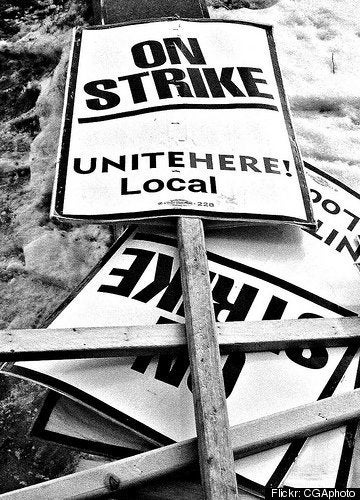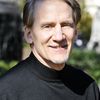
Strolling through New York City's Union Square, it takes a vivid imagination to conjure its atmosphere on September 5, 1882, and to understand how much our contemporary scene -- a mostly harmonious mix of the well-heeled, the worker, students, political activists and immigrants -- finds its heritage there. This is especially true for the labor movement.
On that late summer day, seamstresses at windows waved handkerchiefs and blew kisses to some 50,000 workers who had marched from City Hall to Union Square (so named decades earlier because it was the intersection of some of the city's earliest thoroughfares). The optimistic cheers of bricklayers, typographers, railroad workers and jewelers rocked the buildings as banners waved, proclaiming "Labor Built This Republic and Labor Shall Rule It," "No Money Monopoly" and "Pay No Rent."
The size and combustibility of the crowd must have startled the genteel, fashionable New Yorkers shopping at Tiffany's and other local palaces of commerce, attending a concert at the aristocratic Academy of Music, perusing books at Brentano's and imbibing at Delmonico's.
Workers had demonstrated in Union Square before, just after the Civil War, when labor organizations and protests were largely unknown. And they had first battled police in nearby Tompkins Square Park in 1874, igniting worker rallies and insurrections nationwide.
But this day was different. They were back in Union Square in 1882 for two main reasons. First, because it had been the city's epicenter for public demonstration since 1861, when as many as 250,000 Northerners assembled there demanding vengeance for the fall of Fort Sumter. It was said to have been the largest gathering in North America to that time.
They were also drawn to Union Square because it had become the dividing line between New York's rich and the immigrant European workers filling the tenements of the Gas House District (now Stuyvesant Town and Peter Cooper Village) and the Lower East Side. The square embraced sweat shops and the dazzling affluence of the Ladies' Mile, vast slums and wealthy residential enclaves. It was precisely the right place for the workers -- the "huddled masses yearning to breathe free" -- to unify their disparate activism and gain the attention of the Establishment.
As it turned out, this volatile nucleus gave birth to the modern U.S. Labor movement. The 1882 celebration, billed as a "monster labor festival," was organized by the newly formed Central Labor Union, which was intent on establishing an annual holiday to honor working people. After speeches demanding an eight-hour work day and other improvements in working conditions, the crowd picnicked, danced and celebrated amid German singing societies, Irish fiddlers, union bands and fireworks. Twelve years later, Labor Day became a national holiday.
In subsequent decades, Union Square remained center stage for labor, with many emerging unions establishing headquarters there. But the festive, optimistic tone of gatherings evaporated as worker demands collided with moneyed interests. Worker-based organizations sprang up in and near Union Square, and communists, anarchists and socialists vied for leadership of the labor movement, riling increasingly angry crowds. Perhaps the most famous firebrand was the anarchist Emma Goldman, a Lithuanian émigré who as early as 1893 proclaimed to thousands in Union Square they had the right to take bread if they were hungry and to demonstrate their needs "before the palaces of the rich." The authorities began clamping down, and during a 1908 riot of socialists in Union Square, an anarchist tried to throw a bomb at police, instead killing himself and a bystander.
The next year the first protests in the "Great Revolt," a women-led strike, were held in the square and quickly spread nationwide. When a 1911 fire at a sweatshop in the nearby Triangle Shirtwaist Factory killed 146 workers -- mostly young immigrant women -- many thousands of mourners marched through rainy Union Square on a day it was said "the skies wept."
The Triangle tragedy was a catalyst for even more raucous and violent protests that shifted in focus from worker rights to political reform. After a 1930 rally turned into a melee with police and more than 100 were injured, property owners around Union Square petitioned the city to prohibit demonstrations; steps were taken to wrest control of the park from what were seen as increasingly militant and sometimes seditious radicals. The crackdown engendered calls to protect the "Home of Discontent," and the city grudgingly allowed Union Square to continue harboring public assembly and free speech.
Union Square was designated a National Historic Landmark in 1997 in recognition of its pivotal role in labor history. And while Union Square is now a centerpiece of the city's rejuvenation, a destination for shopping, dining and theater -- just as it was a century earlier -- its heritage from the decades of labor activism is always evident. To the square come today's immigrant workers -- Latinos and Asians -- and activists for virtually every social, political and religious cause. The big difference is that Union Square is no longer a fractious dividing line between haves and have nots; rather, it is a haven of free speech and assembly for all -- truly New York's showcase for democracy.
James Isaiah Gabbe is the former President of the Union Square Partnership and author of the forthcoming The Universe of Union Square, the first history of the area.
